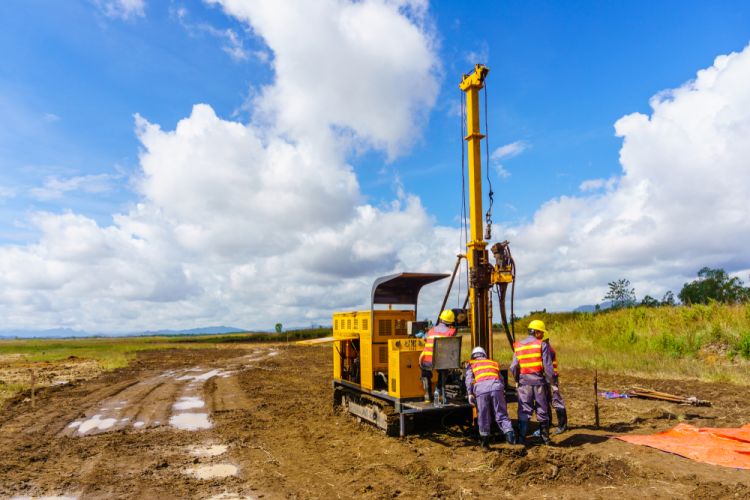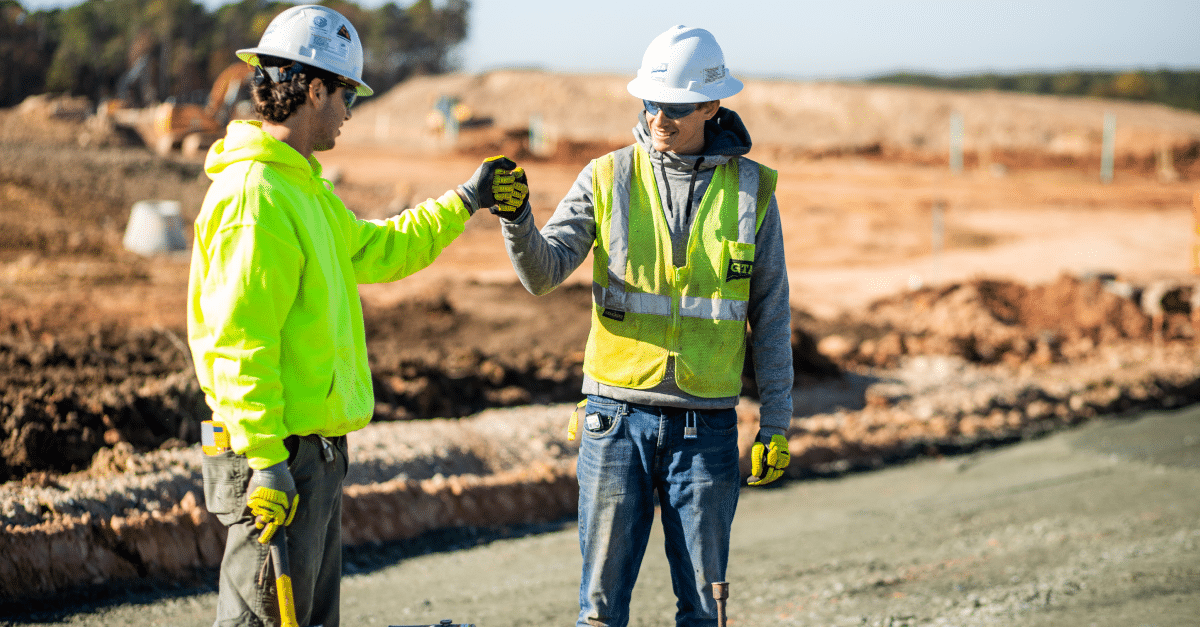The Greatest Guide To Geotechnical Engineering For Construction Projects
The Greatest Guide To Geotechnical Engineering For Construction Projects
Blog Article
The Main Principles Of Geotechnical Engineering For Construction Projects
Table of ContentsGetting The Geotechnical Engineering For Construction Projects To WorkAll about Geotechnical Engineering For Construction ProjectsNot known Factual Statements About Geotechnical Engineering For Construction Projects Geotechnical Engineering For Construction Projects Fundamentals ExplainedThe Ultimate Guide To Geotechnical Engineering For Construction Projects
During the investigation, it is vital to drill at the needed depth and the called for number of openings as per the recommendation of the Canadian Structure Layout standard. Often, the proprietor could save some Geotechnical Investigation expense yet wind up investing greater than the anticipated throughout the building expense.The obligations of the geotechnical specialist include giving product testing for building and construction support. Geotechnical Engineering for Construction Projects. Geotechnical engineers analyse all the area examination reports to guarantee that building and construction is taking place based on the project specification. During building, a confirmatory test for dirt compaction is done on-site to make sure that no future negotiation takes place
After the concrete is poured -7 days and 28 days- tests are performed on concrete examples accumulated from the website to ensure that the concrete poured fulfills the layout criterion. Asphalt core is taken after the Asphalt is laid and compressed to verify that it meets the design criterion. All lab examination reports are analysed by the Geotechnical Engineer to make sure that it satisfies the job spec.
Some Of Geotechnical Engineering For Construction Projects

Geotechnical design plays a crucial function in ensuring the security of building jobs. Learn how it impacts style and overall job success. Geotechnical design is an essential branch of civil engineering that focuses on understanding the behavior of earth materials, such as soil and rock. It includes analysing subsurface conditions to guarantee that a building's structure or infrastructure is steady and secure.

For a trusted foundation and a smooth building and construction procedure, depend offer the knowledge you need. Get in touch with to get expert advice and geotechnical solutions customized to your following task.
9 Easy Facts About Geotechnical Engineering For Construction Projects Explained
When starting a land advancement job, comprehending the ground beneath your feet is as important as the structures you prepare to build above it. Our Geotechnical Design team evaluate the ground, guaranteeing it appropriates for the suggested advancement while giving you with the info required to fulfill your job objectives.
Geotechnical Engineering considers the development of the ground, as it is the foundation for all jobs. Where frameworks require to be developed with regard to the ground problems; ground conditions (e.g., soft ground) may call for reinforcing depending upon the dimension of the designated structure. Prior to structure, you need to learn about the groundwater, dirt framework, and liquefaction chance of your land.
For websites that are not attached on the neighborhood authority facilities additional site investigations would be required to give technological inputs for on-site stormwater and wastewater. We have experienced Geotechnical Designers based in each workplace, sustaining your geotechnical requirements nationwide. Connect to us to go over just how we can sustain your next project.
These reports are tailored to fulfill the particular demands of a project and include design parameters and recommendations for the building and construction of a variety of man-made frameworks. As giving working as a consultant solutions covering areas such as slope stability and load-bearing abilities for various materials, these designers embark on research and advancement tasks to boost techniques, equipment, materials understanding and evaluation covering whole lifecycles.
A Biased View of Geotechnical Engineering For Construction Projects

Rates of pay typically enhance as your understanding and skills grow, with guidelines aiming to a graduate beginning wage of in between 18,000 and 28,000 per year in the UK. This increases to 26,000 to 36,000 with a couple of years of experience and after that getting to 40,000 to 60,000+ for elderly, legal or master engineers.
However, with the ideal application it is possible to master the profession and gain entry to a tough yet rewarding and important occupation. A geologist would need to retrain to come to be a geotechnical designer, although there is a lot of cross-over in between the 2 professions, which could make this important source simpler - Geotechnical Engineering for Construction Projects. Geologists require to have an understanding of soils, rocks and various other materials from a clinical viewpoint, while geotechnical designers tale their knowledge of issues such as soil and rock technician, geophysics and hydrology and use them to engineering and environmental tasks
When beginning out, these engineers will certainly often tend to work with much less intricate jobs, constructing up understanding and experience all set for more difficult job later on. Geotechnical designers tend to be experts in certain locations as they grow in experience, concentrating on specific frameworks such as trains, roads or water. These designers also deal with eco-friendly energy, offshore and onshore oil and gas, nuclear power, and extra.
The smart Trick of Geotechnical Engineering For Construction Projects That Nobody is Discussing
The time taken to end up being a geotechnical engineer depends on where you are based, where you research study and what degree of education and learning you desire to obtain prior to going into the workplace. Generally-speaking it takes 3-4 years to reach the fundamental needs to start a job as a geotechnical engineer.
These procedures make it possible for specialists to examine a host of dirt technicians consisting of weight, porosity, void-to-solid fragment click this link ratio, permeability, compressibility, maximum shear strength, bearing capacity and contortions. If the framework requires a deep structure, engineers will certainly make use of a cone penetration examination to approximate the amount of skin and end bearing resistance in the subsurface.
When evaluating a slope's equilibrium of shear tension and shear strength, or its capacity to stand up to and undergo movement, rotational slides and translational slides are generally taken into consideration. Rotational slides stop working along a rounded surface, with translational slides happening on a planar surface area. A specialist's goal is to establish the problems at which an incline failing might happen.
Commonly, searchings for recommend that a website's dirt must be treated to improve its shear strength, stiffness and leaks in the structure before style and building. When it comes time to set out try this web-site structure plans, professionals are progressively concentrated on sustainability, even more particularly just how to lower a foundation's carbon impact. One method has been to replace 20 percent of a structure's concrete with fly ash, a waste product from coal fire power plants.
Report this page